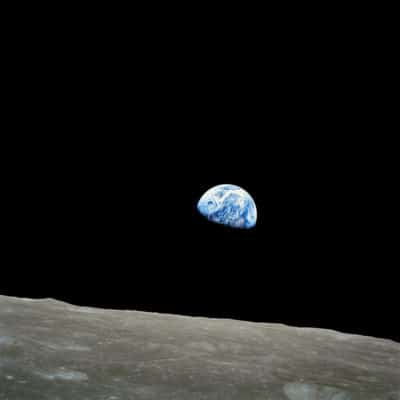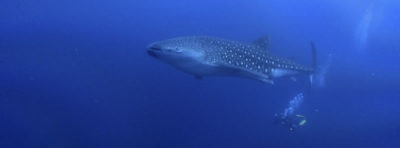High Seas Protection
(2015)
Scientists convene in Paris
Written by UNESCO World Heritage Centre

Christmas Eve 1968 might seem like a strange date to mark as a pivotal point in our understanding of Earth. Yet it was on that date that William Anders of Apollo 8 took the first color photo of earth from afar rising above the grey surface of the moon. Now nearly five decades later we have realized we live on an ocean world and yet protection of the open ocean – the high seas – has still some way to go to match standards we take for granted on land and closer to the coast. It is significant because the high seas cover half the planet.
Just as on land, the deepest and remote ocean harbors amazing places that deserve recognition, just as we have given to the Grand Canyon, to the Galapagos Islands or the Serengeti plains of Africa. Imagine a world with sunken fossilized islands covered in a great diversity of corals and other marine life, giant volcanoes forming vast seamounts that can all but dwarf the tallest mountains on land, a floating golden rainforest on the ocean surface with its own unique creatures or even a deep dark place with 200 foot high white spires of rock just like you could imagine in a lost city beneath the waves. Some of these places are even powered not by the light of the sun like anything else on earth but with chemistry giving birth to some of the most unusual species – most of it unknown to science. All these exist and more in the High Seas officially referred to as Areas Beyond National Jurisdiction lying as they do outside the control of any single country.
This month, UNESCO’s World Heritage Centre Marine Programme with the International Union for the Conservation of Nature (IUCN) convened scientific experts in Paris this week to assess the potential for applying the concept of Outstanding Universal Value—which is the bedrock the World Heritage concept is built on—to the High Seas. The results of this assessment will be presented at the World Heritage Committee meeting next July in Istanbul, Turkey.

“This is a major opportunity to close the biggest gap in World Heritage action. We hope our research will help inform the World Heritage Committee when they meet to consider this issue in 2016 and help the world realize that amazing places exist out there,” said David Freestone, who is leading the research project together with Dan Laffoley, Marine Vice Chair of IUCN’s World Commission on Protected Areas.

The High Seas were identified as a major last frontier for the World Heritage List in IUCN’s 2013 gap analysis, which followed an earlier recommendation of the external evaluation of the World Heritage Global Strategy in 2011.
The project is made possible by the generous support of the Khaled bin Sultan Living Oceans Foundation, a nonprofit environmental science organization and ocean research foundation established to help preserve, protect and restore the world’s oceans and aquatic resources.
“The vast ocean areas beyond national jurisdiction are perhaps the largest habitat for life on Earth. The Khaled bin Sultan Living Oceans Foundation strives to sustain ocean life and UNESCO’s World Heritage has the means to engage international powers to preserve special places. We are proud to be partners in this incredible effort and look forward to help nations realize their true potential when preserving areas of Outstanding Universal Value wherever it might be located,” said Captain Philip Renaud, Executive Director Living Oceans Foundation.
